PRE-RELEASE
Poor driveability
| Poor driveability |
Conditions
No diagnostic trouble codes.General fault diagnosis rules for poor driveability are difficult to concretize. However, some hints and advice are given in the following.
Diagnostic procedure
1. Check the engine coolant temperature
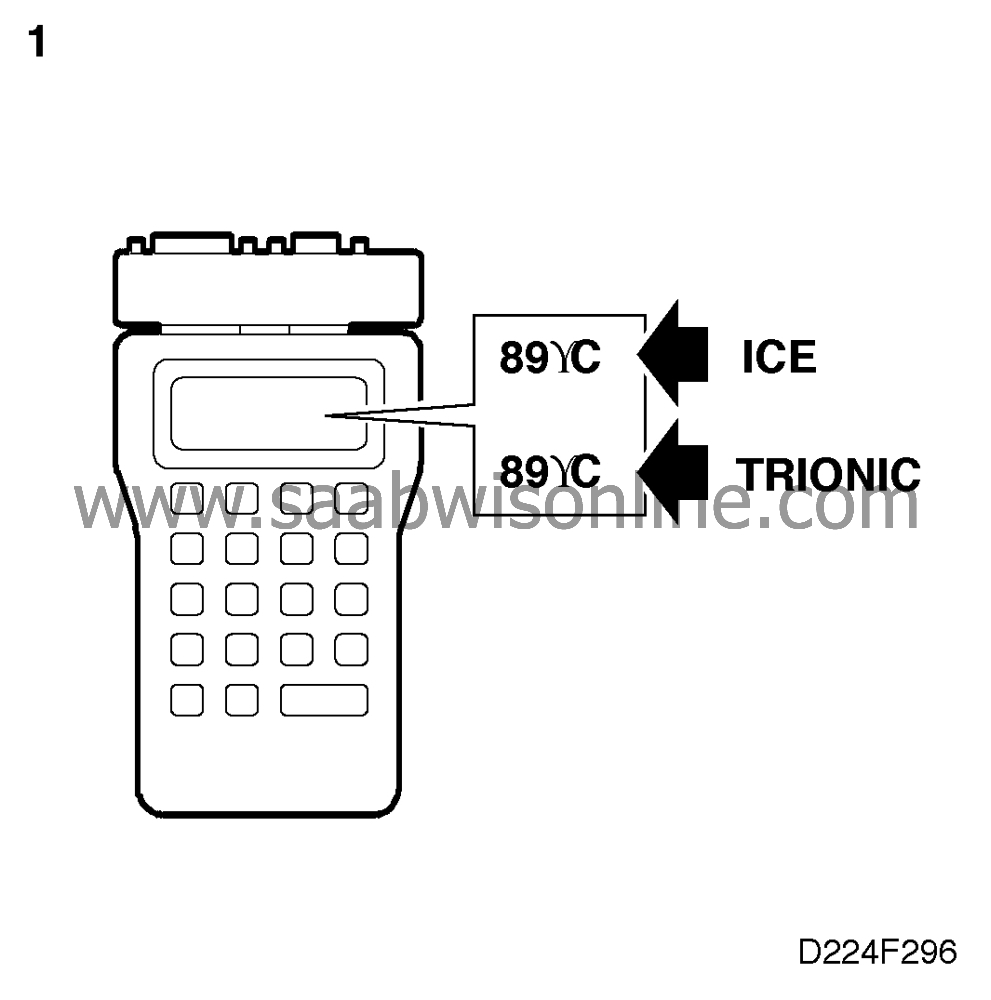
| - |
Connect an ISAT scan tool.
|
|
| - |
Contact the Trionic system.
|
|
| - |
Select
"READ FUNCTIONS".
|
|
| - |
Select
"COOLANT TEMPERATURE".
|
|
| - |
Read off the engine coolant
temperature.
|
|
| - |
Then contact the ICE.
|
|
| - |
Select
"READ VALUES".
|
|
| - |
Select
"COOLANT TEMPERATURE".
|
|
| - |
Read off the engine coolant
temperature as a reference.
|
|
The difference between the two temperature readings may be 5°C (9°F) due to tolerances.
| Note | ||
|
If the Trionic system receives no reference ground on pin 66 from crimped connection J68, it will show about 20°C (36°F) too high a coolant temperature even if the temperature sensor is OK. |
2. Check pressure sensor operation
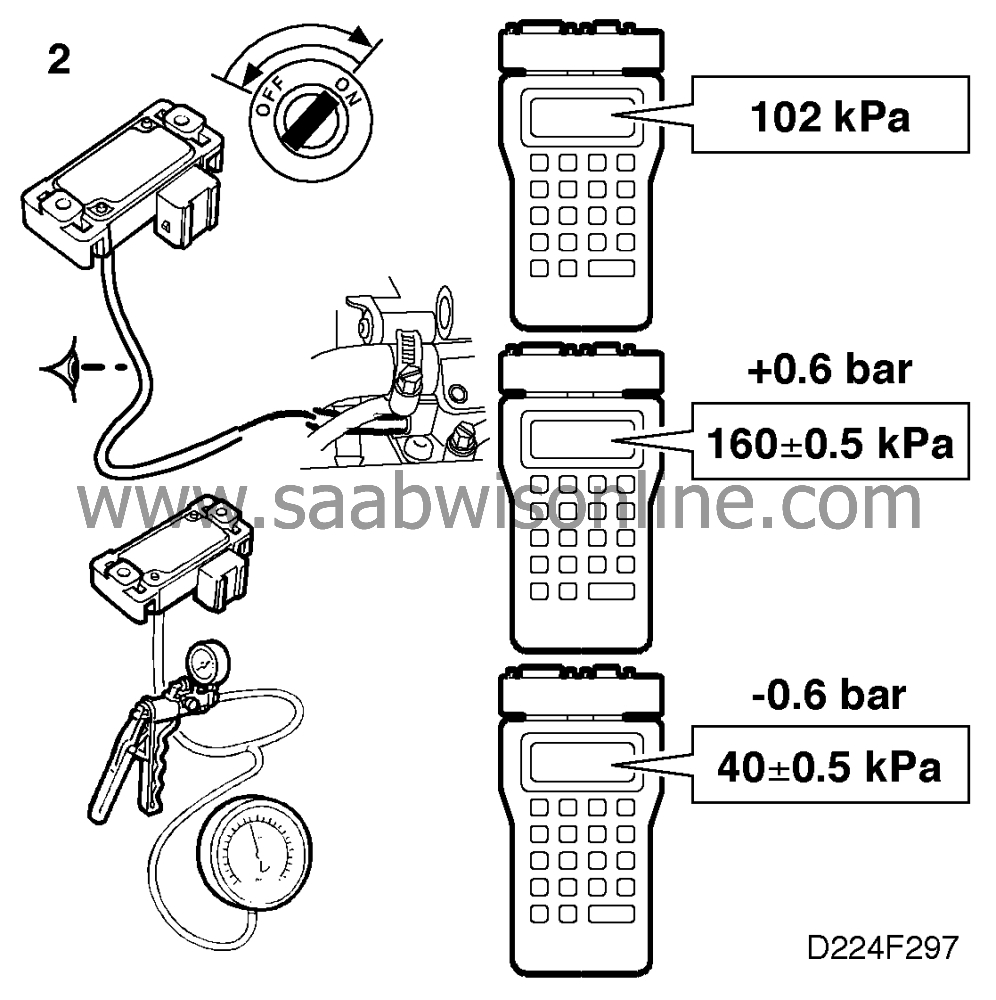
Driveability problems may arise if the pressure sensor does not provide the correct voltage across the entire pressure range.
| - |
Check pressure sensor operation.
|
|
| - |
Turn the ignition switch to the ON
position and then back to the OFF position.
|
|
| - |
Select
"READ FUNCTIONS".
|
|
| - |
Select
"INTAKE PRESSURE".
|
|
The ISAT scan tool should show a reading of about 102 kPa (NOTE: the reading is dependent on air pressure).
| - |
First build up a positive pressure of
0.6 bar and then create a negative pressure of -0.6 bar. Use a pressure gauge and
pressure/vacuum pump.
|
|
The ISAT scan tool should show readings of 160±5 kPa and 40±5 (it may show somewhat lower readings at high altitude). If any reading is not OK, change the pressure sensor.
3. Check for leakage
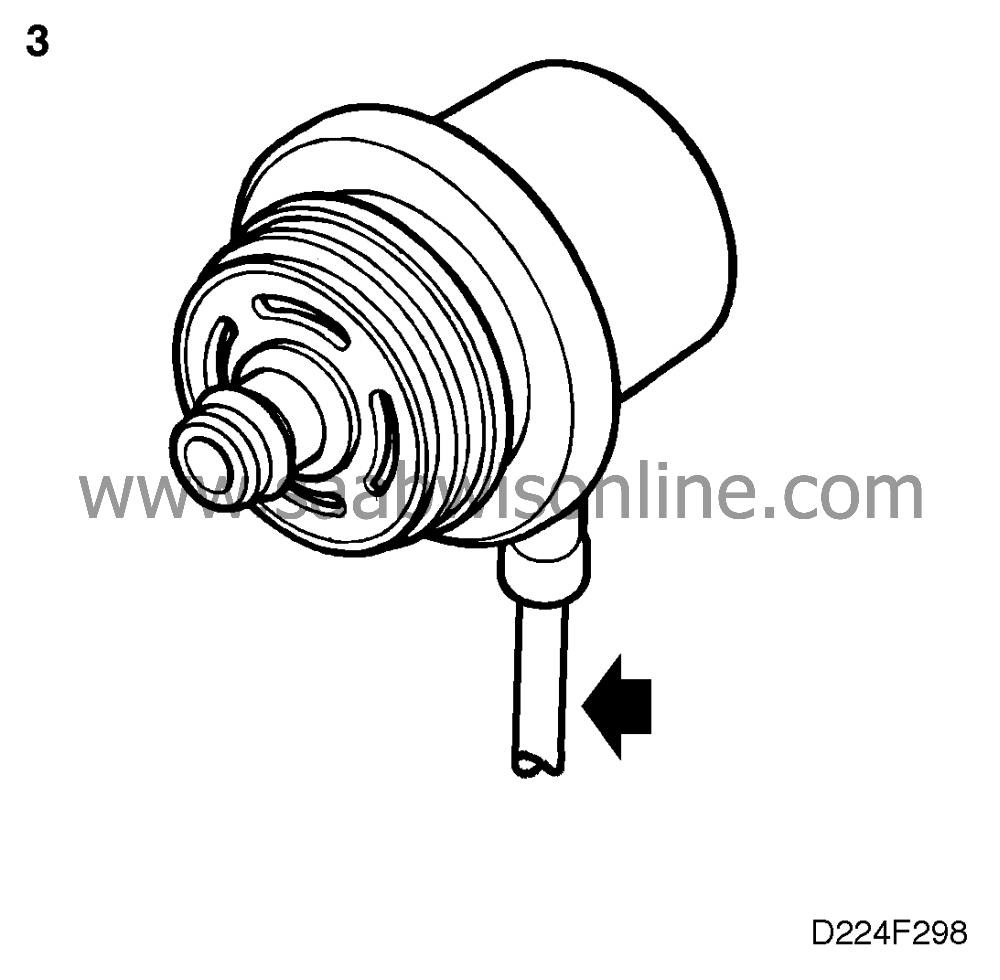
| - |
Check for leakage in the hose
connected to the fuel pressure regulator.
|
|
4. Check the electrode gap
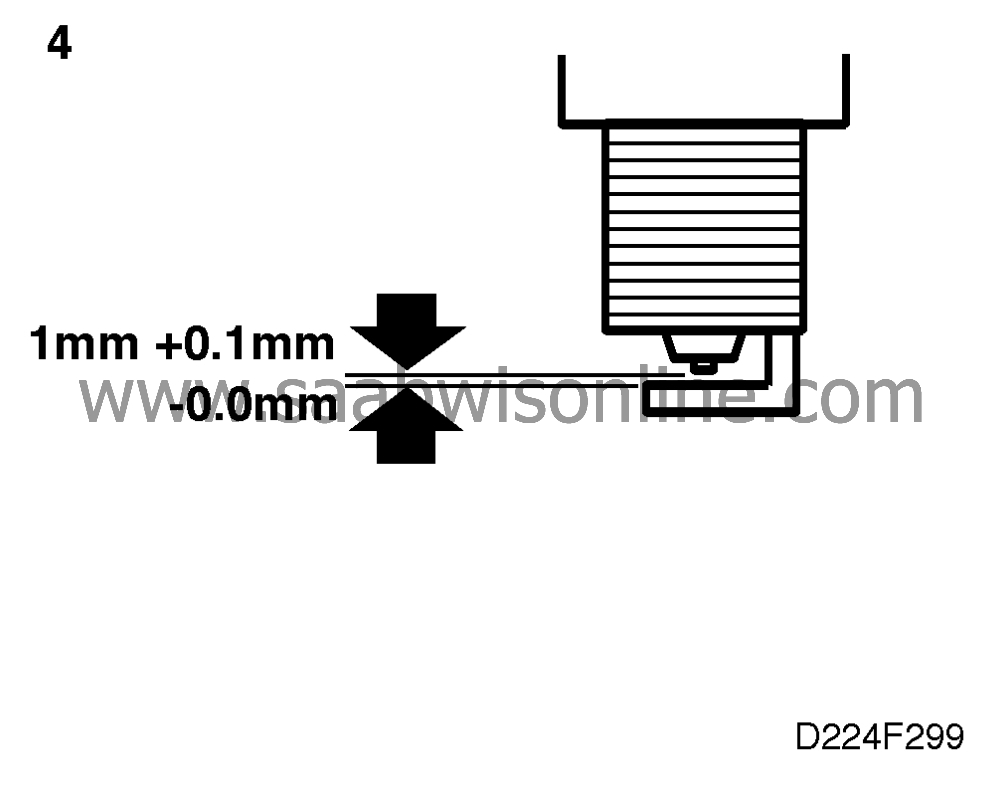
The spark plug electrode gap is extremely important for proper engine performance.
The spark plug gap should be 1.0+0.1 -0.0 mm
Too wide a gap will cause misfiring under full load conditions. Too small a gap will result in lumpy idling and hesitant running under light load conditions.
5. Inspect the spark plug insulator tips
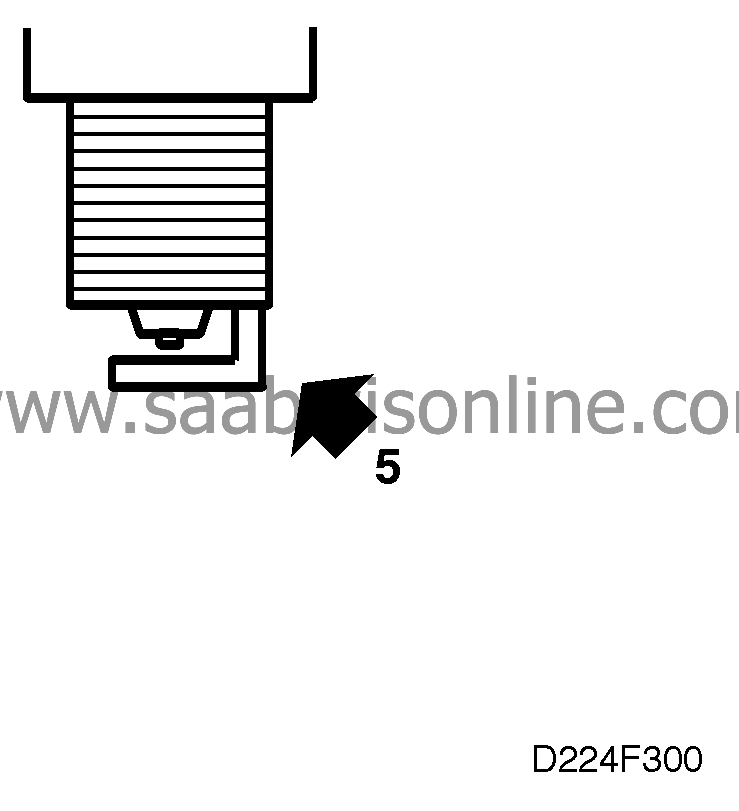
| - |
Check the colour of the spark plug
insulator tips.
|
|
If the insulator tip of any plug is noticeably lighter in colour it may be because this cylinder is receiving too weak a mixture.
| - |
If this is the case, check the flow
capacity of the injectors. See
 .
.
|
|


